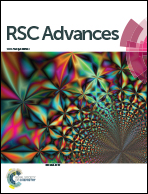The effects of He clusters on the mechanical properties of Ti3AC2 (A = Ge, Si): first-principles studies
Abstract
Herein, the damage to the mechanical properties of Ti3AC2 (A = Ge, Si) was systematically investigated by first-principles calculations. It is known that the interstitial He atoms homogenously generated in the materials would finally migrate to the A layer and form clusters of no more than 7 He atoms at a mono-vacancy in the A layer, and the cluster of 7 He atoms reduces the ideal tensile strength of Ti3SiC2 (or Ti3GeC2) to about 37.3% (or 35.5%). The strain simulations showed that the fracture would mostly occur around the A layer and enhances with increase in the cluster size, while the Ti3C2 blocks are relatively stable during tension. Although the He damage to the mechanical properties shows the similar trend for Ti3SiC2 and Ti3GeC2, the former displays better properties for applications in nuclear structural devices.



 Please wait while we load your content...
Please wait while we load your content...